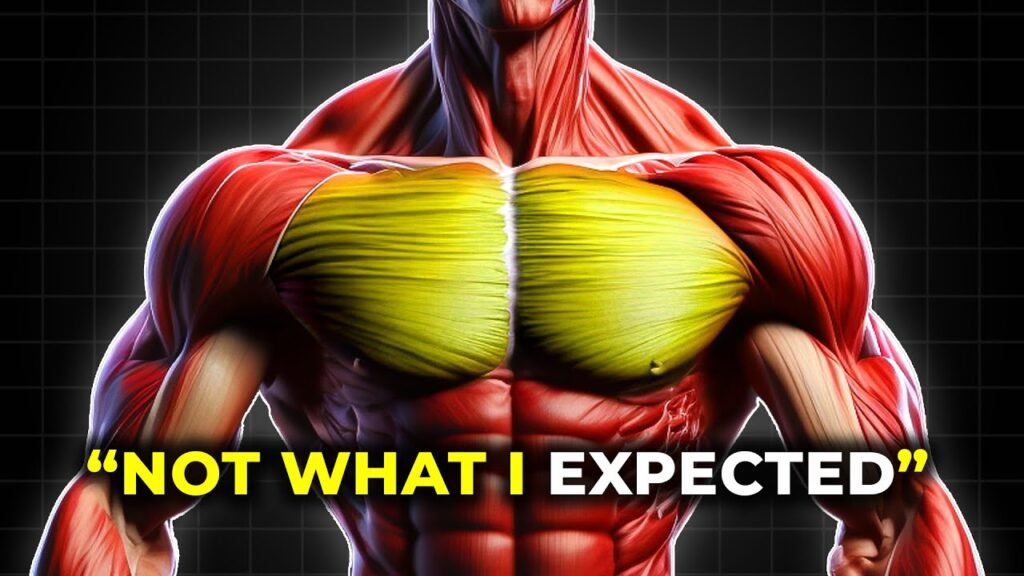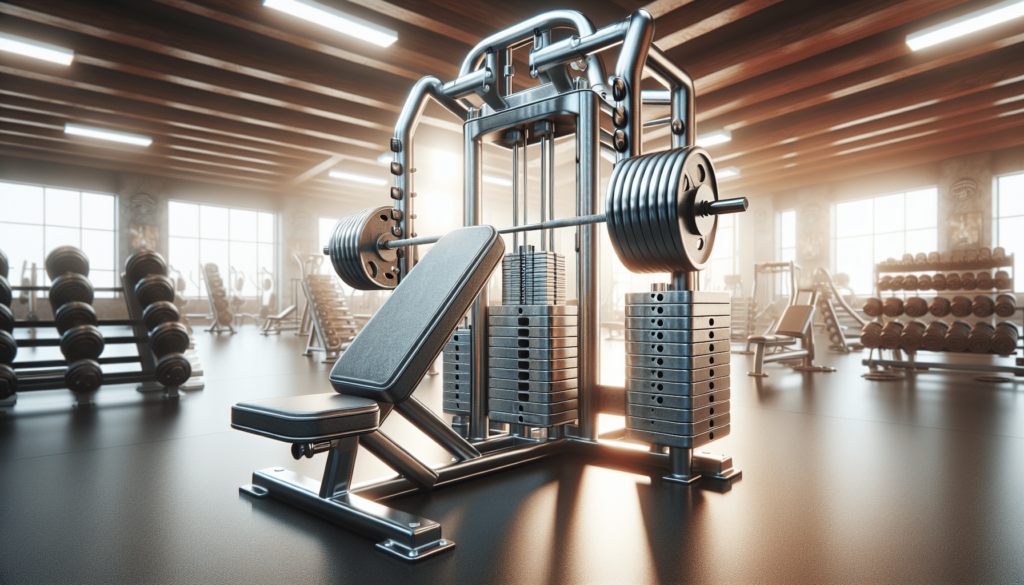Optimize your chest workout routine with these superior exercises. In this video by Body Hub, the chest exercises are ranked from worst to best, providing you with a comprehensive guide to focus only on the exercises that will give you the gains you’re after. The bench fly, standing cable press, and 60° incline bench press are considered some of the worst exercises due to limited muscle activation and potential for injury. On the other hand, the push-up, floor fly, underhand dumbbell bench press, and decline bench press are recommended as better alternatives. The dip is praised as the best version of a push-up, while the cable crossover takes the number one spot as the absolute best chest exercise due to its versatility and effectiveness in targeting the chest muscles. With these rankings, you can optimize your chest workout routine for maximum results.
The video dives into the scientific evidence behind these rankings, highlighting the muscle activation and potential risks associated with each exercise. By understanding the limitations and benefits of each exercise, you can make informed choices to maximize your gains and prevent injuries. So whether you’re a beginner or an advanced lifter, this guide will help you optimize your chest workout routine and achieve the chest development you desire. Get ready to take your chest workouts to the next level with these superior exercises.
The Video Ranking
In a video produced by Body Hub, the ranking of chest exercises from worst to best is presented. This ranking serves as a guide for individuals to focus on exercises that will yield optimal results in their chest development. By understanding the criteria used to determine the ranking, viewers can make informed decisions about their workout routines and select exercises that align with their fitness goals.
Overview of the Ranking and its Importance
The ranking of chest exercises is a valuable resource for individuals looking to maximize the effectiveness of their workouts. By identifying the best exercises and avoiding those with limited benefits or potential for injury, individuals can ensure they are making the most of their time in the gym. The ranking provides a comprehensive overview of various chest exercises, highlighting their advantages and disadvantages, muscle activation, and safety considerations.

Explanation of the Criteria Used for Ranking Chest Exercises
The ranking of chest exercises is based on several criteria that determine their effectiveness and overall ranking. These criteria include muscle activation, potential for injury, multi-dimensionality, and the exercise’s ability to deliver both muscle growth and strength gains. Exercises that demonstrate higher muscle activation across the chest muscles and offer a greater range of motion are generally ranked higher. Conversely, exercises with limited muscle activation, higher risk of injury, or single-dimensional benefits are ranked lower.
Worst Chest Exercises
Bench Fly: Limited Muscle Activation and Potential for Injury
The bench fly is ranked as one of the worst chest exercises due to its limited muscle activation and potential for injury. While this exercise may have been favored by bodybuilding legend Arnold Schwarzenegger, scientific evidence reveals that the bench press is more effective in activating the chest muscles. Research comparing muscle activity during the bench press and dumbbell flies found that the bench press effectively trains the pecs over a greater range of motion. Additionally, performing the bench fly without proper form and support can increase the risk of shoulder capsule damage and pec tears.
Standing Cable Press: Drawbacks and Limitations
The standing cable press is also ranked as a worst chest exercise due to its limited muscle activation and focus on the core instead of the chest muscles. While the exercise may challenge the core, it falls short in effectively targeting the chest for optimal gains.
60° Incline Bench Press: Reasons for its Low Ranking
The 60° incline bench press is ranked as a worst chest exercise due to its limited effectiveness in activating the upper chest. Research shows that a bench inclination of 30° provides the optimal activation of the upper chest, while inclinations greater than 45° increase the activation of the anterior deltoid and decrease the muscular performance of the pectoralis major.

Better Chest Exercises
Push-up: Benefits and Variations
The push-up is ranked as a better chest exercise due to its versatility and effectiveness in activating the chest muscles. While often considered a basic exercise, push-ups can be modified to provide a challenge for both beginners and advanced individuals. Studies examining hand placement during push-ups have shown that a neutral or slightly wider grip engages the pectoralis major, triceps, and infraspinatus for optimal muscle activation.
Floor Fly: Advantages over Other Exercises
The floor fly is recommended as a better chest exercise due to its safety and the potential for increased weight and eccentric movement. Unlike the traditional bench fly, the floor fly allows individuals to focus on the exercise without the risks associated with unsupported bench positions. This exercise provides a chance for resisted adduction with the floor acting as a safety net.
Even Better Chest Exercises
Underhand Dumbbell Bench Press: Enhanced Muscle Activation
The underhand dumbbell bench press is considered an even better chest exercise due to its superior activation of the upper chest fibers compared to the 60° incline dumbbell bench press. This exercise is often overlooked but proves to be effective in targeting and activating the upper chest muscles.
Decline Bench Press: Advantages and Targeted Muscles
The decline bench press is also ranked as an even better chest exercise due to its activation of the lower part of the chest. While it may not be the most favored exercise, the decline bench press offers a well-rounded development of the chest muscles.

The Best Chest Exercise
The Dip: Benefits and Comparison with Push-ups
The dip is praised as the best version of a push-up due to its unparalleled opportunities for progressive overload. By adding weight to the dip, individuals can challenge their chest muscles to new heights. Additionally, adding a twist to dips not only targets the chest muscles but also engages stabilizing muscles for an extra challenge.
The Ultimate Chest Exercise
Cable Crossover: Versatility and Effectiveness in Targeting Chest Muscles
The cable crossover is ranked as the absolute best chest exercise due to its versatility and effectiveness in targeting the chest muscles from various angles. Constant tension and peak activation make this exercise unparalleled in sculpting the chest muscles. A study comparing the cable crossover with the bench press found that the cable crossover produced larger maximum absolute moments at the shoulder joint, indicating its superiority in protecting the shoulders and engaging the chest muscles.
Designing Your Optimal Chest Workout Routine
When designing a chest workout routine, it is important to consider your fitness level and goals. Beginners may benefit from starting with basic exercises like push-ups and gradually incorporating more challenging variations as they progress. Individuals with access to different equipment should choose exercises that suit their preferences and equipment availability. Creating a balanced routine that includes an adequate amount of rest and recovery is crucial for muscle growth and preventing overtraining.
Incorporating the Superior Exercises
Guidelines for including the recommended exercises in your chest workout routine include gradually introducing them into your routine, exploring different variations, and adjusting the intensity level to match your fitness level. It is important to listen to your body and make modifications as needed to prevent injuries and ensure optimal performance.
Addressing Injury Risks and Safety
To minimize the risk of injury when performing chest exercises, it is essential to take precautions and maintain proper form and technique. This includes using appropriate weights, maintaining a stable and supported position, and avoiding excessive range of motion that may strain the muscles or joints. Following the guidelines for each exercise and seeking guidance from a qualified fitness professional can help ensure safety during chest workouts.
Conclusion
In conclusion, the ranking of chest exercises provides valuable insights into the best exercises for maximizing chest development. By considering the criteria used for ranking, individuals can make informed decisions about their workout routines and choose exercises that align with their fitness goals. Optimizing and personalizing your chest workout routine can lead to more effective and rewarding workouts, ultimately helping you achieve your desired chest gains.
